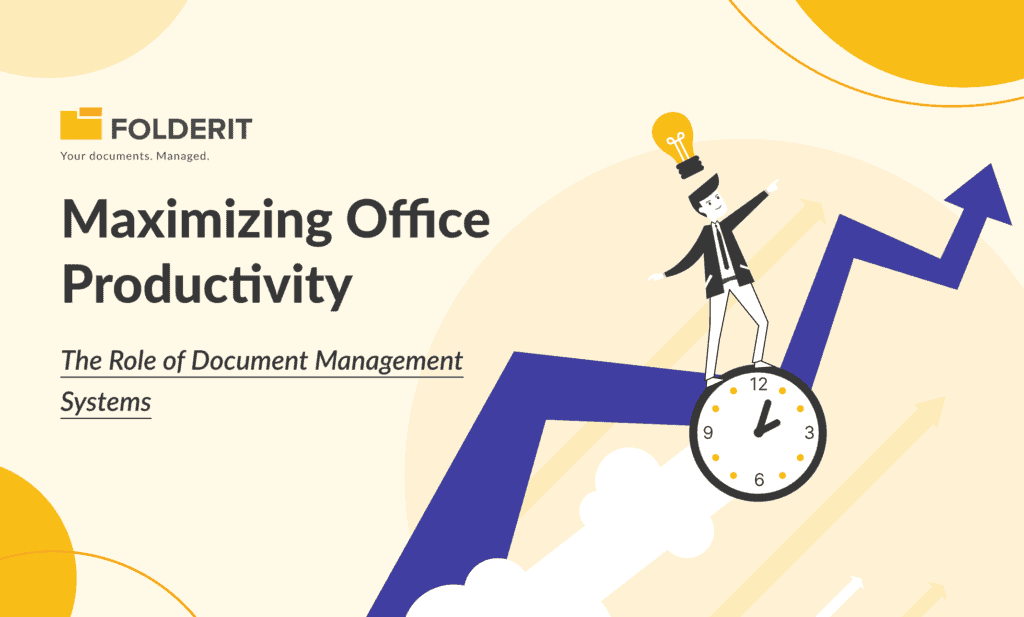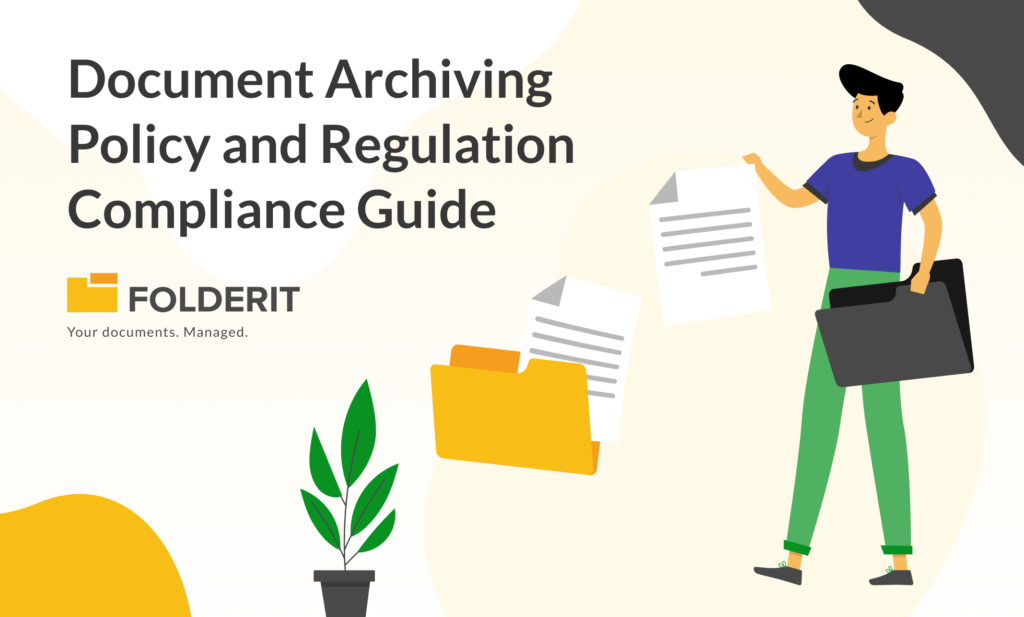Maximizing office productivity is a key objective for any organization. A crucial element in achieving this is the implementation and effective use of Document Management Systems (DMS). These systems are not just tools for storing and retrieving documents; they are integral to optimizing business processes, enhancing collaboration, and ensuring data security.
1. Centralized Document Storage
- Unified Repository: A DMS acts as a centralized repository for all organizational documents, eliminating the inefficiencies and confusion of scattered file storage.
- Immediate Accessibility: This centralization ensures that documents are readily accessible to authorized personnel, saving time and reducing the frustration of locating files.
2. Streamlined Document Retrieval
- Advanced Search Functions: Modern DMS offer sophisticated search functions, including full-text search, making it easier to find documents quickly.
- Efficient Indexing and Tagging: Proper indexing and tagging of documents in a DMS streamline retrieval, allowing for quick access based on various criteria.
3. Enhanced Collaboration and Workflow
- Real-time Collaboration: DMS facilitate real-time collaboration, allowing multiple users to work on documents simultaneously, thereby speeding up project completion.
- Version Control: Keeping track of document versions ensures that everyone is working on the most current version, reducing errors and duplications.
4. Automation of Routine Tasks
- Workflow Automation: Automating routine tasks like document approvals and routing in a DMS can significantly increase efficiency.
- Reduced Manual Input: Automation reduces the need for manual data entry, minimizing errors and freeing up staff for higher-value tasks.
5. Improved Security and Compliance
- Robust Access Control: DMS provide robust access control features, ensuring sensitive documents are only accessible to authorized personnel.
- Audit Trails: Maintaining audit trails of who accessed or modified a document is crucial for compliance and security.
6. Integration with Business Systems
- Seamless Integration: The best DMS seamlessly integrate with other business systems such as CRM, ERP, and accounting software, creating a unified workflow.
- Data Consistency: Integration ensures data consistency across systems, improving the accuracy and reliability of information.
7. Mobile and Remote Accessibility
- Remote Access: With the rise of remote work, having mobile access to documents is essential for maintaining productivity.
- Cloud-based Flexibility: Cloud-based DMS offer the flexibility to access documents from anywhere, at any time.
8. Reducing Paper Dependency
- Digital Transformation: Transitioning from paper-based to digital documents is a key step in modernizing business operations.
- Environmental Benefits: Reducing paper usage not only enhances efficiency but also supports environmental sustainability initiatives.
9. Document Lifecycle Management
- Efficient Handling: DMS enable efficient handling of documents throughout their lifecycle, from creation to archiving or disposal.
- Automated Retention Policies: Implementing automated retention and disposal policies in a DMS ensures compliance and efficient management of document storage.
10. User Training and Support
- Comprehensive Training: Providing comprehensive training to staff on using the DMS is crucial for maximizing its benefits.
- Ongoing Support: Regular support and refresher training sessions help users stay updated with new features and best practices.
11. Customizability and Scalability
- Tailored Solutions: The best DMS are customizable to meet the specific needs of a business, enhancing user experience and efficiency.
- Scalable Systems: As businesses grow, a scalable DMS can adapt to increasing demands, ensuring consistent productivity.
12. Measuring Impact on Productivity
- Performance Metrics: Implementing metrics to measure the impact of the DMS on office productivity helps in assessing its effectiveness.
- Continuous Improvement: Regularly reviewing these metrics guides continuous improvement and optimization of the DMS.
13. Reducing Operational Costs
- Cost Efficiency: By automating routine tasks and reducing paper usage, DMS significantly cut down operational costs.
- Resource Optimization: Efficient document management allows for better resource allocation and utilization.
14. Enhancing Decision Making
- Data Accessibility: Quick access to accurate and up-to-date information enables better decision-making.
- Insightful Reporting: DMS often include reporting tools that provide valuable insights for strategic planning.
15. Fostering a Culture of Efficiency
- Promoting Digital Practices: Encouraging digital document handling practices fosters a culture of efficiency and modernization.
- Employee Satisfaction: Efficient systems improve employee satisfaction by reducing mundane tasks and enhancing workplace dynamics.
16. Environmental Sustainability
- Reduced Paper Waste: Digital document management contributes to environmental sustainability by reducing paper waste.
- Energy Efficiency: Cloud-based DMS can also be more energy-efficient compared to maintaining physical document storage and servers.
Document Management's Impact on Productivity
The role of Document Management Systems in maximizing office productivity is multifaceted and significant. By centralizing document storage, streamlining retrieval processes, enhancing collaboration, and automating routine tasks, DMS not only boost efficiency but also contribute to better security, compliance, and decision-making. The integration of DMS with other business systems, coupled with their scalability and customizability, makes them an indispensable tool in the modern business landscape.
As we look towards the future, the continuous evolution and adoption of DMS will undoubtedly play a pivotal role in shaping productive, efficient, and environmentally sustainable business practices. For organizations aiming to stay competitive and agile, investing in a robust DMS is not just an option but a necessity in the journey towards operational excellence.



